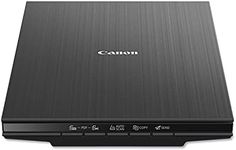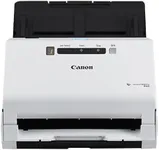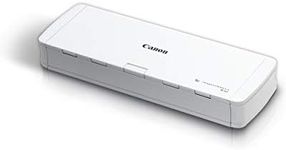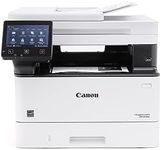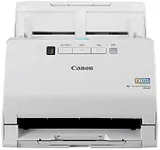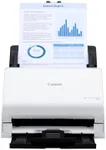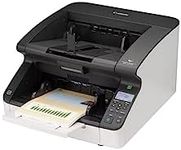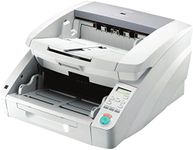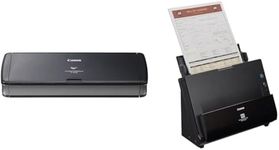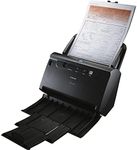Buying Guide for the Best Canon Scanners
When choosing a Canon scanner, it's important to consider your specific needs and how you plan to use the scanner. Whether you're scanning documents, photos, or artwork, different models offer various features that can enhance your scanning experience. Understanding the key specifications will help you make an informed decision and select the best scanner for your requirements.ResolutionResolution refers to the amount of detail a scanner can capture, measured in dots per inch (DPI). Higher resolution means more detail and clarity in the scanned image. For general document scanning, a resolution of 300-600 DPI is usually sufficient. For photo scanning, a higher resolution of 1200 DPI or more is recommended to capture fine details. If you need to scan artwork or high-quality images, look for scanners with even higher resolutions.
Scan SpeedScan speed indicates how quickly a scanner can process documents, usually measured in pages per minute (PPM) or images per minute (IPM). Faster scan speeds are beneficial for high-volume scanning tasks, such as in an office setting. For occasional home use, a slower scan speed may be acceptable. Consider how often and how much you will be scanning to determine the appropriate scan speed for your needs.
Color DepthColor depth, measured in bits, determines the number of colors a scanner can capture. Higher color depth results in more accurate and vibrant colors. For standard document scanning, 24-bit color depth is typically sufficient. For photo and artwork scanning, a higher color depth of 48 bits or more is preferable to ensure color accuracy and detail.
ConnectivityConnectivity options determine how you can connect the scanner to your computer or network. Common options include USB, Wi-Fi, and Ethernet. USB is suitable for direct connections to a single computer, while Wi-Fi and Ethernet allow for wireless or networked scanning, which is useful in office environments or for multiple users. Consider your setup and how you prefer to connect your scanner when choosing the right model.
Document HandlingDocument handling features include automatic document feeders (ADF), duplex scanning, and flatbed scanning. An ADF allows for batch scanning of multiple pages, which is useful for high-volume tasks. Duplex scanning enables scanning of both sides of a document simultaneously, saving time and effort. Flatbed scanners are ideal for scanning books, photos, and delicate items. Think about the types of documents you will be scanning and choose a scanner with the appropriate handling features.
Software and CompatibilityThe software that comes with the scanner can greatly impact your scanning experience. Look for scanners that include user-friendly software with features like OCR (optical character recognition) for converting scanned documents into editable text. Additionally, ensure the scanner is compatible with your operating system and any other software you plan to use. Compatibility with cloud services can also be a plus for easy storage and sharing of scanned documents.
Size and PortabilityThe size and portability of a scanner can be important depending on your workspace and how you plan to use it. Compact and portable scanners are ideal for small spaces or for taking on the go, while larger scanners may offer more features and better performance for stationary use. Consider where you will be using the scanner and how much space you have available when making your choice.
